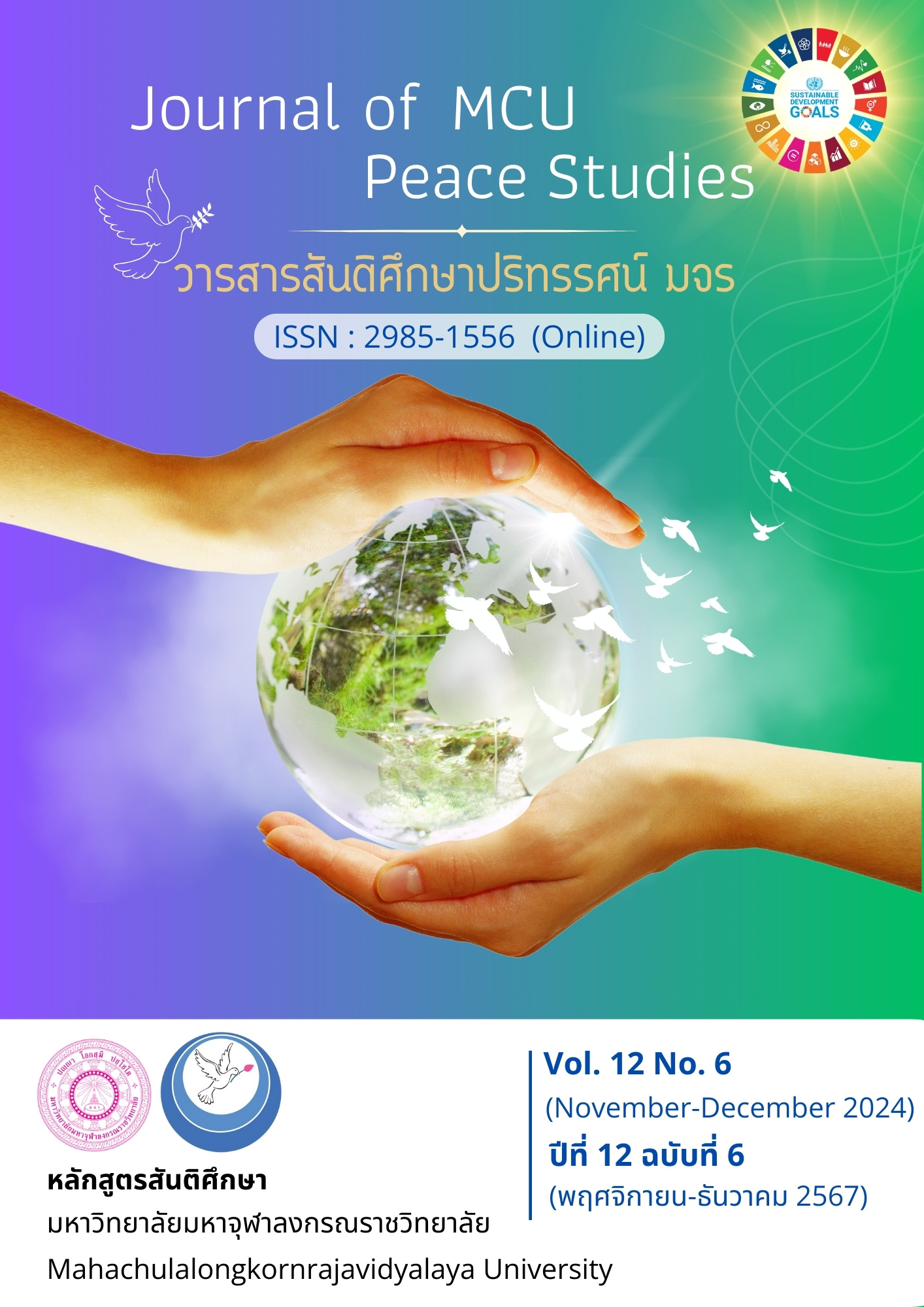คำกริยาแสดงอาการ : ภาพสะท้อนมโนทัศน์กลุ่มชาติพันธุ์กระเหรี่ยงโป ภูมิภาคตะวันตกของประเทศไทย
Main Article Content
บทคัดย่อ
งานวิจัยนี้มีวัตถุประสงค์เพื่อ 1) วิเคราะห์คำกริยาแสดงอาการภาษากะเหรี่ยงโปภูมิภาคตะวันตก และ 2) วิเคราะห์มโนทัศน์ที่สะท้อนจากคำกริยาแสดงอาการภาษากะเหรี่ยงโปภูมิภาคตะวันตกตามแนวอรรถศาสตร์ชาติพันธุ์ ผู้วิจัยเก็บข้อมูลภาษากะเหรี่ยงโปจากผู้พูดภาษากะเหรี่ยงโปภูมิภาคตะวันตก 3 พื้นที่ ประกอบด้วย ตำบลไล่โว่ อำเภอสังขละบุรี จังหวัดกาญจนบุรี ตำบลห้วยคลุม อำเภอสวนผึ้ง จังหวัดราชบุรี และ ตำบลสองพี่น้อง อำเภอแก่งกระจาน จังหวัดเพชรบุรี จำนวน 30 คน เครื่องมือที่ใช้ในการวิจัย คือ แบบบันทึกคํากริยาแสดงอาการภาษากะเหรี่ยงโป วิเคราะห์ข้อมูลเชิงพรรณนา
ผลการศึกษาพบว่า 1) คำกริยาภาษากะเหรี่ยงโป 7 ชุดคำ ตามเกณฑ์มิติความแตกต่างทางความหมาย ประกอบด้วย “ทำให้ขาด” “เอาไปหรือเอามาจากที่” “เอามือหรือไม้ฟาดหรือเข่นลงไป” “ทำให้ร้อนหรือสุกด้วยไฟ” “ทำให้สะอาดโดยใช้น้ำ” “ทำให้ของเหลวหรือสิ่งที่อยู่ในของเหลวเดือดหรือสุก” และ “ทำให้สิ้นแสง” 2) คำกริยาแสดงอาการสะท้อนมโนทัศน์ที่เป็นอัตลักษณ์ของกลุ่มชาติพันธุ์กะเหรี่ยงโป 2 ประการ คือ คนกะเหรี่ยงโปมีความเป็นอยู่ที่เรียบง่าย และ คนกะเหรี่ยงโปมีวิถีชีวิตที่ผูกพันกับธรรมชาติ
Article Details

อนุญาตภายใต้เงื่อนไข Creative Commons Attribution-NonCommercial-NoDerivatives 4.0 International License.
ทัศนะและความคิดเห็นที่ปรากฏในบทความในวารสาร ถือเป็นความรับผิดชอบของผู้เขียนบทความนั้น และไม่ถือเป็นทัศนะและความรับผิดชอบของกองบรรณาธิการ ยินยอมว่าบทความเป็นลิขสิทธิ์ของวารสาร
เอกสารอ้างอิง
Aemdit, C. (2008). The Relationship Between the System of 'Hit' Verbs and the Cognitive System of Thai and Khmu Speakers: A Test of the Whorfian Hypothesis. (Master’s Thesis). Chulalongkorn University. Bangkok.
Chanyeam, C., & Prasithrathsint, A. (2018). The Relationship between the Semantic System of “Cutting Terms” and the Cognition of Thai Speakers and Northen Swaw Karen Speakers: A Test of Linguistic Relativity Hypothesis. Journal of Graduate Studies Valaya Alongkron Rajabhat University, 12(2), 25-34.
Chuamaharwan, S. (1998). Color Terms and Color Perception of Tai Lue, Lua, Hmong, and Karen Speakers in Chiang Rai and Phayao Provinces. (Master’s Thesis). Chulalongkorn University. Bangkok.
Chuchat, C. (2000). Using Local Wisdom to Conserve Forests and Ecosystems to Solve the Problem Drought in Northern Thailand. Journal of the National Research Council of Thailand, 32(1), 93-114.
Hengsuwan, M. (2014). An Ethnosemantic Study of the Terminology and Conceptual System of Ghosts and Spirits in Southeast Asian Languages. (Doctoral Dissertation). Chulalongkorn University. Bangkok.
Karen Thai Cultural Center. (2016). Thai People of Karen Descent. Retrieved March 20, 2023, from https://www.Laiwo.Go.Th/Dnm_File/Travel/15247_Detail.Pdf
Panmeta, N. (2012). Klangkham. (6th ed.). Bangkok: Amarin.
______. (2015). Thai Grammar. (7th ed.). Bangkok: Chulalongkorn University.
Panyaathisin, K. (2009). An Ethnosemantic Study of Cooking Terms in Northern Thai. (Master’s Thesis). Chulalongkorn University. Bangkok.
Payne, T. E. (1997). Describing Morphosyntax: A Guide for Field Linguists. New York: Cambridge University Press.
Prasithrathsint, A. (2012). Key Figures and Key Ideas in Ethnosemantics: Access to Culture through Language. Bangkok: Chulalongkorn University.
______. (2013). Sociolinguistics. (5th ed.). Bangkok: Chulalongkorn University.
Rattanakul, S., & Burusphat, S. (1995). Encyclopedia of Ethnic Groups in Thailand: Sgaw Karen. Research Institute for Languages and Cultures of Asia, Mahidol University. Nakornpathom.
Siriphan, N. (2011). Color Terms and Attitude toward Color of Thai, Pwo Karen, Mon and Khmu in Amphoe Si Sawat Kanchanaburi Province. (Master’s Thesis). Silpakorn University. Nakornpathom.
Srisavasdi, B. (2002). Hill Tribes in Thailand. Bangkok: Odeonstore.


